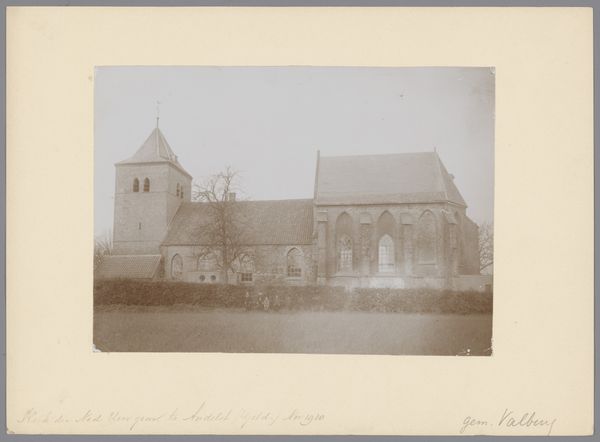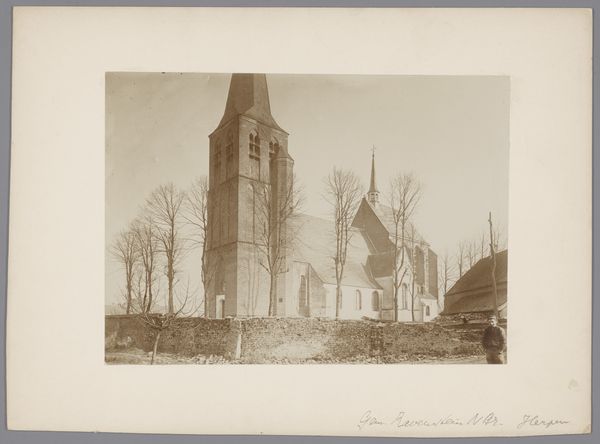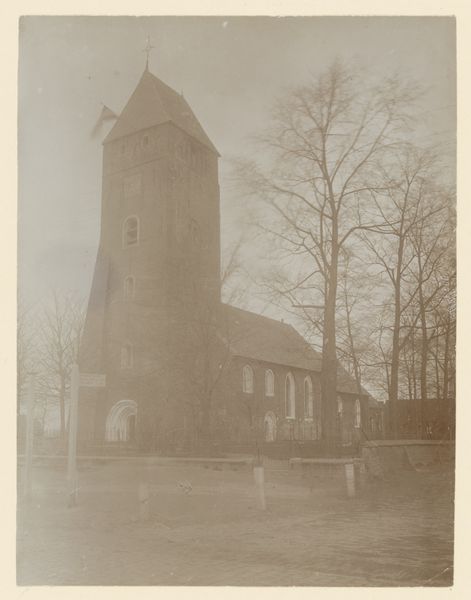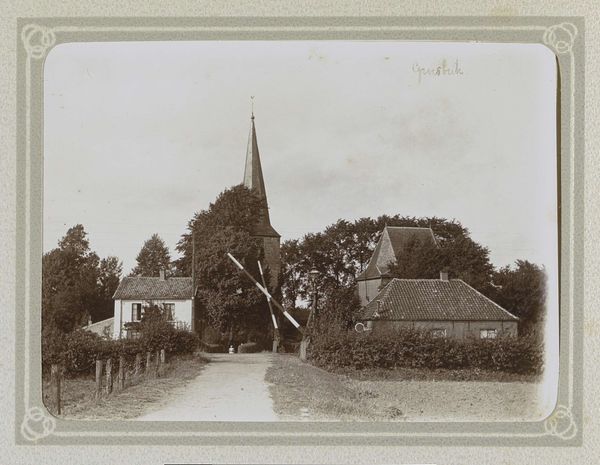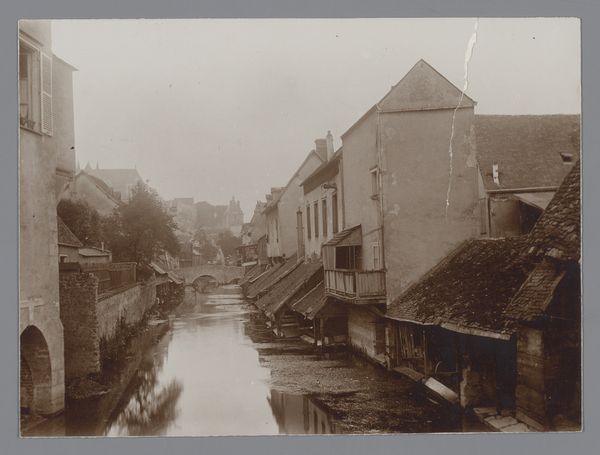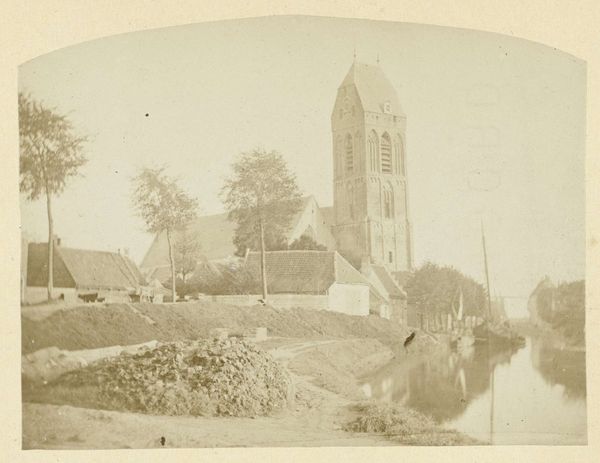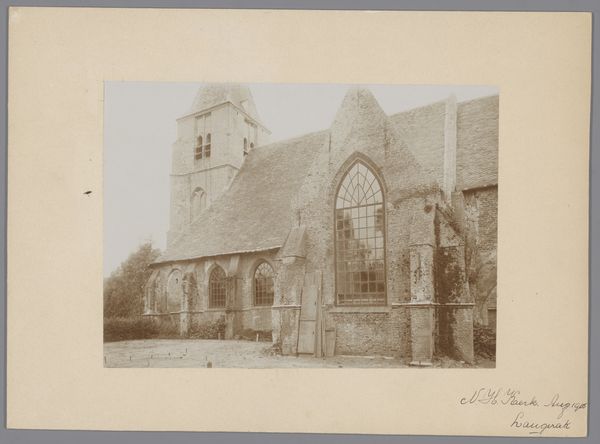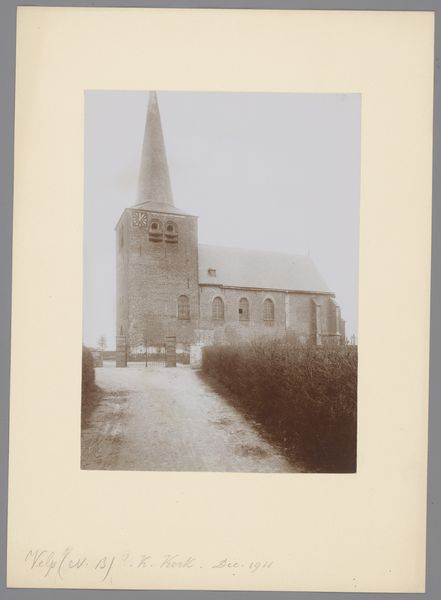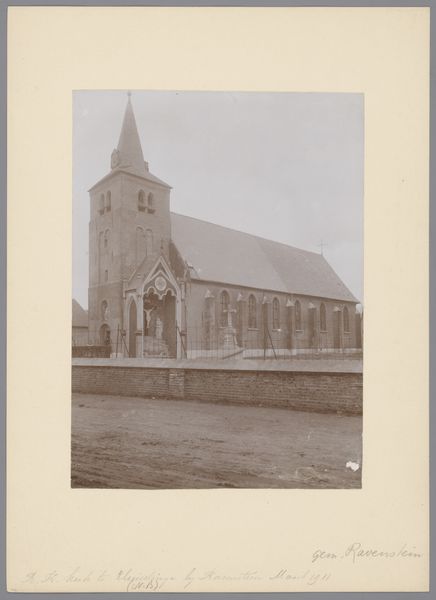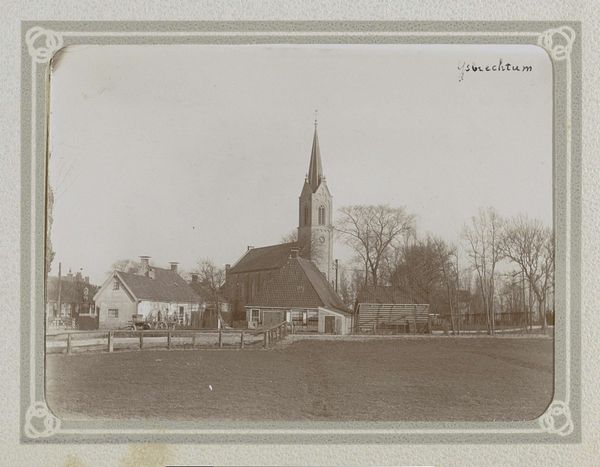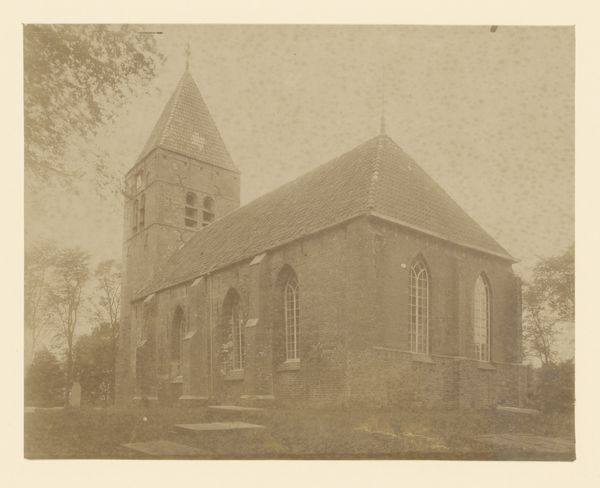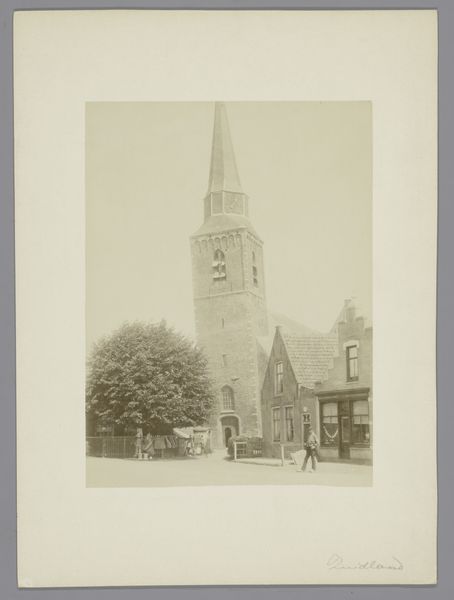
photography, gelatin-silver-print
#
landscape
#
photography
#
gelatin-silver-print
#
cityscape
#
genre-painting
#
realism
Dimensions: height 9 cm, width 14 cm
Copyright: Rijks Museum: Open Domain
Curator: This gelatin-silver print, simply titled "Ramp te Oud-Vossemeer op 13 maart 1906," captures a scene from the Gebroeders van Straaten. What strikes you immediately? Editor: It feels eerily calm, considering. The water's still, reflecting the buildings. Yet the date—March 13, 1906—hints at something disruptive. I mean look at the people bunched in that boat. It's a stark, almost unsettling portrait of communal displacement. Curator: Indeed. Oud-Vossemeer experienced severe flooding, and this photograph offers a fascinating look at how people navigated that disaster. It serves almost as an historical document showing a society coping with unexpected adversity. Genre-painting blended with necessity. Editor: Absolutely, we see a spectrum of reactions. Some people on that boat look almost celebratory— posing even – while others appear more solemn, contemplative, looking to escape. Gender, even social class plays into it—look at that group of ladies versus the men holding the boat together! It invites speculation about community dynamics under pressure. Curator: Well it really emphasizes photography’s growing role at that time in documenting current events for wide audiences. Photographs such as these were distributed widely and functioned almost as our modern form of immediate news, although processed with very different techniques. They shaped public understanding and narratives around such events. Editor: True, though it raises ethical considerations. How do the photographers position themselves in relation to the suffering? It can romanticize hardship if it lacks deeper reflection. The reality behind it for each of them on the boat can not be conveyed. Is this photo a vehicle for empathy or a mere spectacle? Curator: That's a valid question. But the realism movement sought to represent the world honestly, social upheaval and all. And what do you think that capturing of realism here could symbolize or mean on a more deeper and profound scale? Editor: It’s a mirror to ourselves, showing how societies adapt. It shows that resilience can sometimes be found by finding a community and also reveals our shared fragility in the face of bigger ecological forces. Also the limitations of who or what can become an image. It's complex, poignant. Curator: I think you are on the money. Looking closer makes you ponder at what the community lost when the disaster came. But at least they remained as one during those dark times. Editor: Precisely, there's both devastation and unity encoded in a single image. A potent lesson even now, wouldn't you say?
Comments
No comments
Be the first to comment and join the conversation on the ultimate creative platform.
